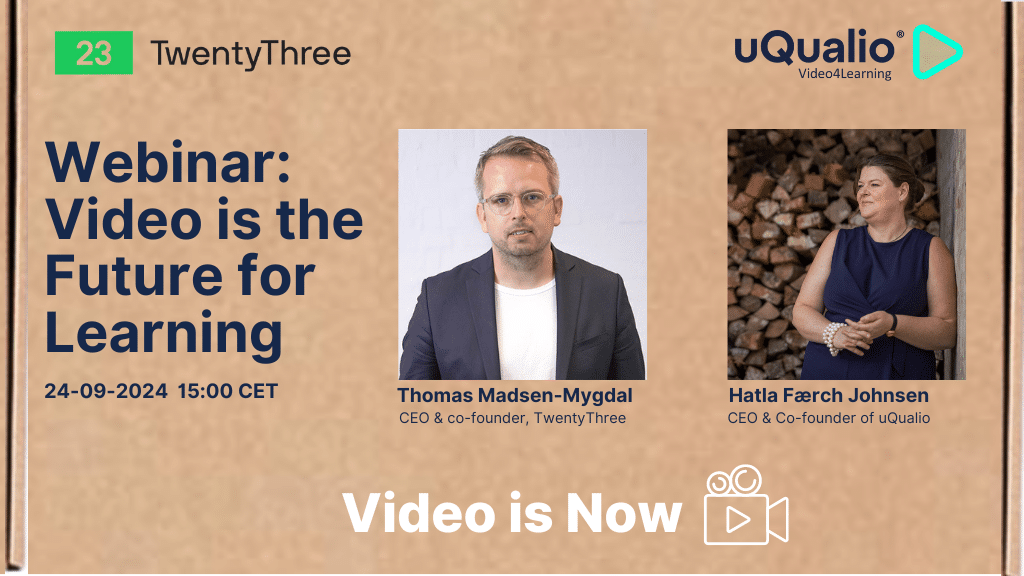With increasing adoption of eLearning and remote work, videos provide an easily accessible and diverse option for consumers and end-users to learn about a business’s offerings from any part of the globe. Here’s how you can use videos effectively in your customer education strategy to build credibility and trust with end-users.
In the last couple of years, customer education has evolved considerably with technological advancements.
It all began with the rise of the internet in the 1980s. As a result, businesses started to offer advanced services and products due to growing market competition, making it super-important to equip customers with the skills and knowledge to understand and use such products efficiently.
Soon after, in the early 2000s, SaaS-ification of technology began. While B2B (Business-to-Business) SaaS (Software as a Service) came into existence in the 1990s, the availability of fast internet and growth in cloud computing led to a colossal overhaul.
As technology continued to simplify day-to-day tasks, tech companies began to come up with better ways to deliver the product. The SaaS market had already become extremely competitive by then, allowing businesses to realize the importance of offering a superior customer experience in ensuring customer retention and improving brand loyalty.
Today, customer education is critical to the majority of SaaS businesses – and for that matter – any company out there. Businesses invest key resources into educating their customers to help them achieve the intended goals.
Why Use Videos in Your Customer Education Strategy?
Video training is increasingly becoming a tool of choice for customer training to provide them with the knowledge they need to make an informed decision or use the product efficiently.
There are several reasons why companies are increasingly using videos to educate customers. First, videos are engaging, and nothing else can better capture the user’s attention than this type of content. Moreover, product demonstrations through videos make it easier for customers to understand the product in question. This particularly holds true for complex products that could otherwise be tough to explain through text-based manuals, which eventually lowers the burden on the customer support team.
Besides, videos can be a superb way to build trust with the customer by showing them the company’s expertise and providing them with key product information. This helps with customer retention.
Finally, one can easily create, share, and distribute product training videos online, enabling companies to reach a larger audience faster.
On the uQualio video4learning platform, you have several options to create a product owner training video – screencast, record, upload from the library or system, use a linked video from YouTube or Vimeo, and you can even make AI-rendered videos with support from uQualio’s AI integration partners.
Based on your requirement, you can also distribute your content in three different modes: private (email or SMS), public (QR code and link), and protected (account login required). Managing your content is easy too with programs, channels, and directories.
5 Ways to Use Videos in Customer Education
uQualio is a SaaS microlearning video training platform with a simple interface and advanced features to make any type of training a breeze!
We believe that nothing can beat videos when it comes to teaching customers how to use a product and explaining complex concepts. It helps end-users delve deep into the product with ease, gathering key insights through your explainer videos.
Companies of any size and type can use videos as part of their customer education strategy in the following ways:
1. Product Demos

Product demos are an excellent way to educate customers and drive engagement. These videos bring to light the distinct features and benefits of the product in focus. They also help customers clearly understand how to use or maintain it, and what can be done if anything goes wrong.
2. Instructional Videos or Tutorials
Businesses can make instructional videos or video tutorials, describing common workflows or tasks using the product in question. Such videos allow customers to quickly understand the product while avoiding confusion or frustration.
Most people think that product demos and instructional videos are the same, but they are two unique kinds of end-user training videos with different objectives.
While product demos usually introduce a new product or features of a product to help customers understand its value proposition, instructional videos are aimed at providing customers with a stepwise guide, and often used at the time of customer onboarding.
Typically, instructional videos are longer and more detailed than a product demo. Instructional tutorials aid customers in getting up and running with the product. Product tutorials also assist customers in fixing common issues. Moreover, instructional videos allow customers to learn advanced techniques and how to use the product, safely and optimally.
3. Customer Success Stories
Companies can create videos to showcase how their products have helped address customer pain points. These videos can prove extremely powerful in building credibility and trust with prospects while demonstrating the value of the product.
These stories highlight how the company’s extended enterprises or end-users have used the product to solve their unique problems and achieve their specific objectives.
4. Thought Leadership Videos
Any company can create thought leadership videos to position itself as an industry expert. As part of customer training, these videos can also be used to educate customers about general industry trends and problems.
A thought leadership video can take several forms, such as a panel discussion, an interview with a subject matter expert, or a business presentation.
These videos also help build trust with customers by providing them with key information and insights, which may help with customer retention.
5. In-App Videos
Companies can embed microlearning tutorial videos directly into their products for guiding users on particular features and workflows. These videos should be accessible on-demand within the product’s interface, allowing users to have a contextual and seamless learning experience.
Such videos can be particularly effective for educating users who believe in “learning by doing.” This could also be beneficial for the customer support team, as in the case of a self-service product that requires limited human support.
Interestingly, uQualio itself is a self-service SaaS video eLearning platform with built-in self-help video guides that allow users to navigate and use the platform easily and efficiently.
Want to explore the endless possibilities the uQualio white-label solution offers for customer training and beyond?
Achieve Effective & Affordable Video Training
– uQualio is an award-winning, easy-to-use, all-in-one NextGen LMS software for any types of online video training.












